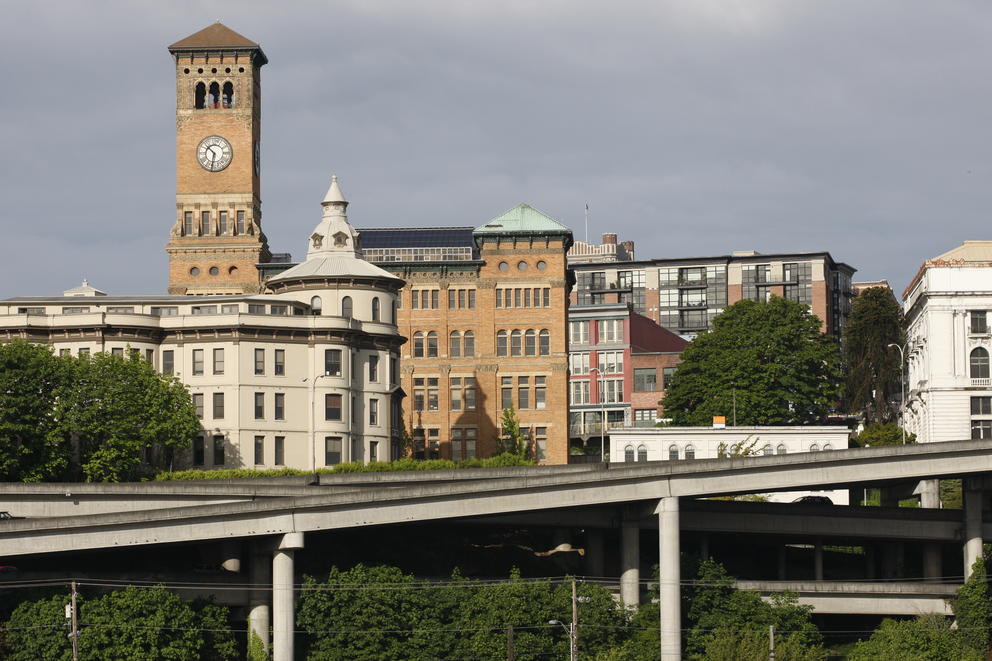Woodards’ goal is as laudable as it is ambitious. Tacoma, like most U.S. cities, continues to suffer from inequities that disproportionately impact people of color. Widespread attention has been paid here lately to problems with policing, but this isn’t the only way that cities perpetrate racism, as Woodards knows. She told Crosscut last month, “We can’t become anti-racist by just fixing policing. If we really are going to fix systemic racism, we have to look at every system that produces barriers.”
In our region, perhaps no barrier is greater than the lack of affordable housing. High-quality, desirable and conveniently located homes elude many people of color, especially Black, brown and Indigenous people.
Legacy housing policies — redlining and racial covenants, the promotion of suburbanization and sprawl, and zoning — all interact to complicate Tacoma’s housing crisis. The exclusionary legacies of these historical and ongoing systems and practices must be addressed if Tacoma is to become a truly anti-racist city.
The city’s “Home in Tacoma Project” could be one step in the right direction. Effectively a program of zoning reform, the project offers recommendations for how Tacoma could increase housing supply that meets the needs of low- and fixed-income residents.
In its boldest iteration, the project offered a growth strategy that puts communities and community-building at the center. It called for the addition of “missing middle housing,” which premises multiunit and clustered housing in walkable, transit-rich neighborhoods that are anchored by retail, parks and other amenities. Unfortunately, the high ambitions of the project have since been watered down — and that’s a problem, if the city wants to meaningfully move the needle on the severe housing shortage.
The debates informing “Home in Tacoma” are really about one thing: Who gets to experience the benefits of living in a city? Tacoma is already a desirable place to live even though much of the city is not set up to deliver the benefits of urban life to most of its residents. Reasonable conveniences — walkability, access to good food, parks, roads that are shared and safe — are not distributed equally across the city. If zoning reforms don’t also account for social infrastructure and all we get is more housing without thought or care to what people need to thrive, then we aren’t planning for whole communities.
Let me explain what I mean.
As in so many other cities, a major interstate slices through the middle of Tacoma, effectively cutting off neighborhoods from the rest of the city. Many of these neighborhoods — the Lincoln District is one example — are home to people of color.
In recent years, the city has delivered infrastructural improvements to neighborhoods in south Tacoma, including protected lanes along 65th Avenue, bulb-outs on 38th Avenue and the continuation of the Pipeline Trail, a protected and paved route for pedestrians and bicyclists connecting the Tacoma Dome transit station to neighborhoods across south Tacoma. These are necessary and welcome improvements. Many more like them are needed if Tacoma wants to reverse the negative impact of its built environment on people of color.
And then there are Tacoma’s zoning restrictions, which “Home in Tacoma” aims to address. In city planning, zoning is correlated with racism because it leads to segregation. Restrictions on the type of housing that can be built in a particular zone are the main culprit. In many suburbs, for example, single-family homes are kept at car trip’s length from shopping and services. Single-family homes are more expensive than other types of housing, thus excluding people who have not inherited wealth through real estate and who’ve been prevented from building it because of structural racism. In cities like Tacoma, the insistence on the predominance of single-family zoning must be seen as a tacit endorsement of this legacy racism.
When people cannot afford to live in a city that offers them so much in the way of amenities, but not a lot in the way of attainable housing, they move to the city’s outskirts (or they are forced into homelessness). Zoning restrictions result in sprawl, the type of growth that further separates people from where they need to be, and which further necessitates the use of cars. The cost of sprawl can be measured in social disconnection, political division, health disparities and environmental degradation.
National statistics help illuminate this situation. Consider that over 2.3 million households in the U.S. live more than a mile from a grocery store and lack access to a car. In 2019, 19% of Black households, and 16% of Latino households, experienced food insecurity. This species of segregation is common in Tacoma as well.
The dependency on cars that single-family zoning engenders can also be deadly. Nationally, the number of car-related deaths have jumped, especially among Black Americans. The statistics are visible locally: according to the Pierce County sheriff, 30 deaths have resulted this year from car crash-related incidents, the highest figure in a decade.
To make Tacoma an anti-racist city, it won’t be enough to change existing policies and hope that these unmake the existing hostility of the built environment. To be truly anti-racist, Tacoma must be physically remade.
In practice, this requires aggressive and immediate support of those currently not enjoying the benefits of urban life.
There’s much Tacoma can start or continue doing today to ensure that people live in walkable neighborhoods that support multiple mobilities, have access to grocery stores and green spaces, and offer protection from cars.
To get started, we must expand access to public transit while continuing to reclaim and reopen roads by restricting vehicle access. Public transit, an essential resource for many poor and working class people, is the premier solution for addressing a host of other urban issues, including congestion and pollution. If we do these two things, roads can remerge as meaningful public spaces that accommodate pedestrians, children at play, diners and transients, and which facilitate efficient transit. As a result, we can expect improved safety and quality of life and increased commercial activity.
Taking this initial step will enhance what is possible through existing reform efforts, but we must revisit “Home in Tacoma” to ensure that its implementation is truly comprehensive. Anything less and we risk the project turning into yet another scheme that benefits developers and existing property owners, while exacerbating segregation, sprawl and car dependency.
“The form of the city exhibits the philosophy of its people,” notes journalist Charles Montgomery. Can Tacoma remake itself to reflect its anti-racist aspirations? This is our moment to shine.



